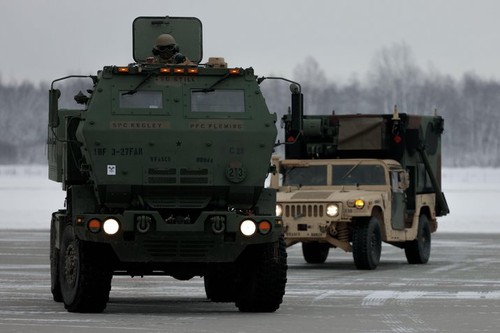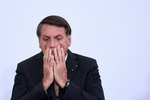
A majority of NATO's 31 members, including Croatia, still fail to set aside 2% of their national annual GDP for defence, and those countries have been criticised by ex-US president Donald Trump, who recently called them "delinquent".
Oglas
The politics-focused digital newspaper company Politico has commented that "there's a clear trend in NATO members' defense budgets: the closer to Russia, the higher the spending."
"While several EU countries still fail to meet the NATO target — some spectacularly so — every country bordering Russia or Ukraine does meet it, according to NATO data. The U.S. and Greece also surpass that 2 percent threshold."
In terms of the defence allocation, Poland ranks first according to its performance in 2023, when it allocated USD 29 billion, which was 12 billion more than in 2022, and three times more than last decade.
"Poland, a front-line state bordering Russia, Ukraine and Russian ally Belarus, has seen the biggest spending leap, jumping from 1.9 percent of GDP in 2014 to 3.9 percent last year. That makes it the top spender per GDP among the 31 countries in NATO."
The USA follows with 3.5% of GDP. In absolute terms, the USA disburses the highest amount, USD 860 billion, which is more than all the other members of the alliance combined.
To date, 11 members have met the NATO defence spending target of 2% of GDP: Poland, USA, Greece, Estonia, Lithuania, Finland, Romania, Hungary, Latvia, the United Kingdom and Slovakia.
Germany joined them on Wednesday, and for the first time since the end of the Cold War, Germany sets aside 2% of its GDP for defence expenditure.
According to Politico, in 2023, Croatia's allocation was 1.8% of the country's GDP, and it currently ranks 16th.
At the end of 2022, Croatia's defence ministry reported that in that year, Zagreb passed the 2% threshold, with the annual allocation for defence reaching 2.16%.
In 2023, however, Croatia's allocation fell to 1.8% of GDP.
The threshold was set two decades ago by NATO's member-states and was not a mandatory requirement, but a benchmark.
The United States presidential hopeful Donald Trump seems to treat it as a requirement. Last week, he not only warned that he wouldn't protect countries that failed to meet NATO's defence spending target of 2% of GDP if they're attacked; he also threatened he would encourage Russia "to do whatever the hell they want" to those countries, Politico recalls.
Kakvo je tvoje mišljenje o ovome?
Učestvuj u diskusiji ili pročitaj komentare
Oglas
Kakvo je tvoje mišljenje o ovome?
Učestvuj u diskusiji ili pročitaj komentare
Oglas
NAJČITANIJE
Oglas
Oglas
Najnovije
Oglas
Oglas





 Srbija
Srbija
 Hrvatska
Hrvatska
 Slovenija
Slovenija



























































